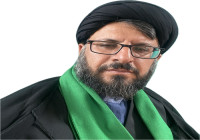The Various Recitations of the Holy Qur'an
A few words should be said about the recitations Qira'aat . It is generally known that there are seven or ten different recitations of the Qur'an. By the word "recitation" is meant the various wordings which convey the same or allied meanings ( Maalik and Malik ) For example Yatta'harna and Yat'harna . It is generally believed that the recitation of the seven or of the ten reciters of the first, second and third centuries of Islam are valid, and Muslims are allowed to adopt either of these in reciting the Qur'an. It is generally believed that the origin of these various recitations goes back to the time of the Holy Prophet who approved these varieties but, according to the Shia Ithna-Ashari School, whose views are based on the teachings of the Holy Imams, the revealed recitation of the Qur'an can be only one since, as the Imam put it, "The Qur'an is One, came down as One, the variation in the recitation comes from the reciters, not from God" It is a misrepresentation of the fact by the ruling party for propaganda purposes that the Holy Prophet followed the recitation of Zaid ibne Thabit during the close of his ministry.
But, as stated by Mustafa Sadiqe-Rufaa'yee in his book EjaazuI Qur'an, the Holy Prophet does not follow anything but the divine recitation 75:16-19. Zaid ibne Thabit and the ruling party who already failed to produce a collection of their own had no alternative but to adopt an approved collection of the Holy Prophet and his recitation; anything else would have been rejected by the Muslim world. 67 Shia Qurra (Reciters):
1 Hamzatubna Habeeb 2 Aasim 3 Abdullah ibne Aamir Yasabi, who acquired knowledge from Waasila Adqu' (a companion of the Holy Prophet) d. 116 A.H.
4 Abi ibne Hamza-e-Kas'ayi, who acquired knowledge from Hamza b. Habeeb, and Ibne Abi laila, who had learnt from Ameerul Momineen Ali ibne Abi Taleb 5 Khalaf ibne Hashanul Bazzar, a student of Hamzatibna Habeeb 6 Yakoob ibne Is'haaq Qazrami, who learnt from Ameerul Momineen Ali ibne Abi Taleb 7 Yazeed ibne Qeeqaa' Makhzoomi, from Abdullah ibne Abbas, who learnt from Ameerul Momineen Ali ibne Abi Taleb.
------------------------
Ref: Haji Mirza Mahdi Pooya Yazdi
www.ahlulbaytportal.com










